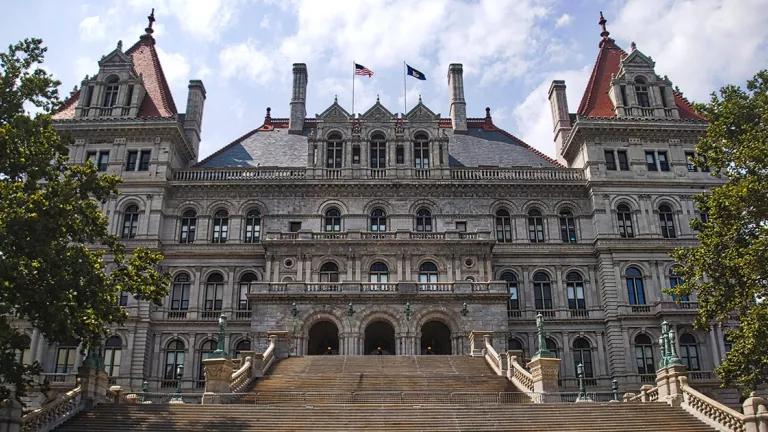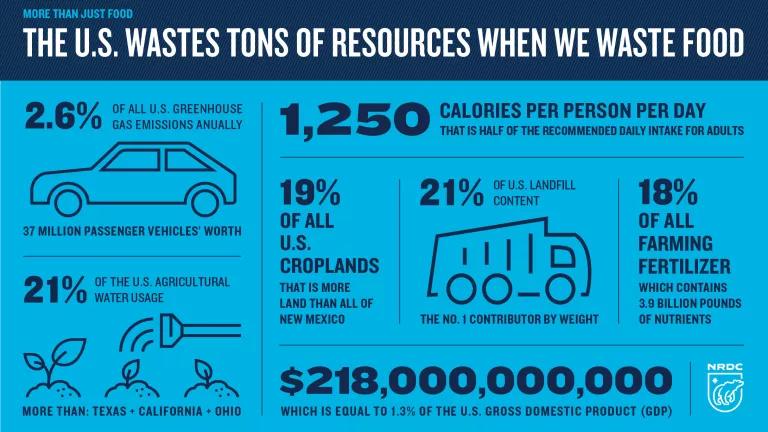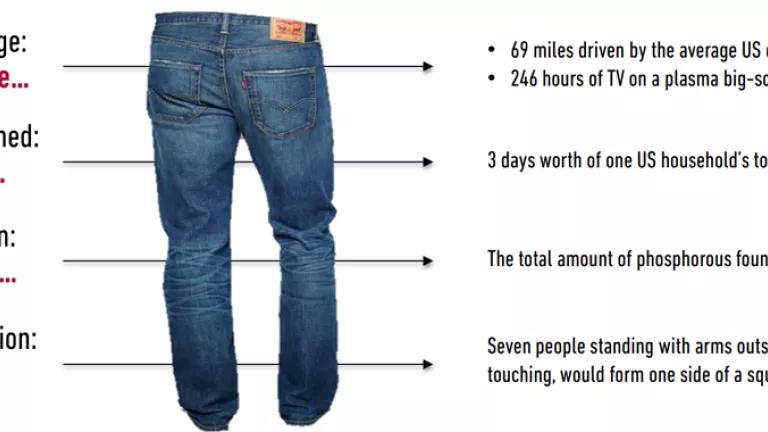NRDC NY Office Diverts 84% of its Waste from Landfill
Across all offices, NRDC has always had strong waste management practices. This past spring our New York office was given the chance to take these practices to the next level by participating in Mayor de Blasio’s Zero Waste Challenge (ZWC). Launched in February 2016, the ZWC aimed to help businesses reach zero waste to landfill and incineration. Between March and June, the Mayor’s office challenged NRDC, alongside major hotels, real estate developers, and supermarkets to divert waste away from landfills toward recycling and composting facilities. The Peninsula New York, the Durst Organization, and Whole Foods are among those that took on the Challenge.
NRDC and other ZWC participants are not the only institutions focusing on reducing our waste footprint this past year. For the first time in history, the U.S. federal government announced ambitious targets to cut food waste in half by 2030. The food industry, from pop-up restaurants to network television shows, are highlighting the theme of waste reduction as a driver of creativity and innovation in the kitchen. In April, NRDC teamed up with the Ad Council to launch Save the Food, a national media ad campaign aimed at reducing food waste from consumers.
We saw the Zero Waste Challenge as an extension of the objectives and values that our organization so strongly advocates for externally. Our New York office was tasked with reaching a 75 percent diversion rate, a 10 percent increase from our historic rate, by the end of our four-month participation. We are proud to announce that, by the end, our diversion rate reached 84 percent exceeding our goal by 9 percent and diverting 19 percent higher than our historical average.
Our Zero Waste Challenge strategic plan was broken into three sections:
1) Assess
You can only manage what you measure—so we make sure to measure waste output, by type, every day of the workweek. This data revealed a historic diversion rate of 65 percent, 10 percent away from our ZWC objective of 75 percent diversion.
To bridge the gap, we performed a waste audit to identify what specific points of confusion were for our staff regarding waste sorting. A few NRDC staff members eagerly helped the Facilities team with this task. By performing the audit, our Facilities staff were able to measure the level of contamination, or improperly sorted waste, in each waste stream. This data informed our improvement goals with respect to diversion and contamination, as well as the focus of our educational materials, which include how beneficial it is to get the waste producers involved in the analysis.
2) Educate
With waste audit in hand, we were well-equipped to design signage that reflected sorting rules clearly, with a special emphasis on errors identified by the waste audit (e.g. composting of paper towels instead of sending them to landfill). Regular updates detailing performance and recommendations were distributed to our NY staff to increase awareness and dispel common misconceptions. To drive home the message to our colleagues, we used the EPA’s Waste Reduction Model (WARM) to estimate what turned out to be a significant carbon emissions saving associated with appropriate sorting waste towards recycling and composting each year (about 21.5 MT CO2e ~ equivalent to 26,800 pounds of coal burned).
3) Incentivize
A final effort to motivate was made through the use of incentives. Facilities used positive incentives, in the form of a competition by floor for the highest diversion rate. We organized a party with small trophies awarded to the floors with the best performance and greatest improvement. We found that these incentives, no matter how small, often increased staff buy-in largely because of their suitability as “water cooler” topics. As word spread, more occupants became aware of their individual practices, made an effort to divert waste, and felt comfortable consulting colleagues regarding sorting rules. We also had the added benefit of working with NRDC employees, many of whom are intimately familiar with these issues, and all of whom have a fundamental care for the environment.
Through these incentives, alongside focused campaigning and educational efforts, the NY office managed to finish the competition at a diversion rate of 84 percent, surpassing our initial goal. While there is no doubt that this achievement is impressive, it only left us energized for continued improvement. The goal to scale up our efforts to all offices and to inch our diversion rate up to 100 percent is now written into our long-term strategic sustainability operations plan. The strides we made in just four months in our largest office proved to us that with a little bit of data analysis and creative solutions, we are capable of achieving even more.



